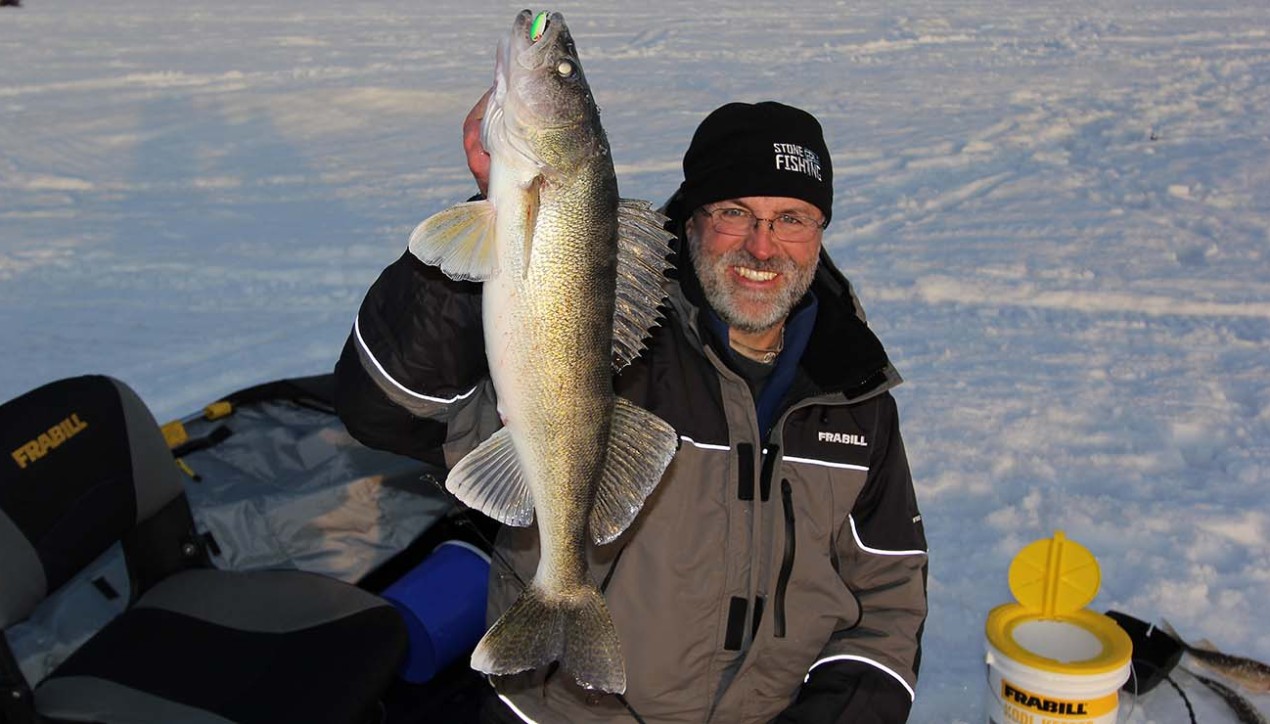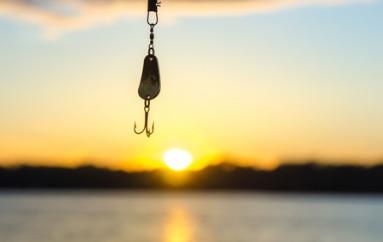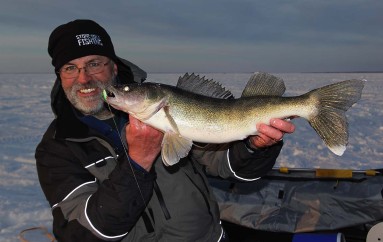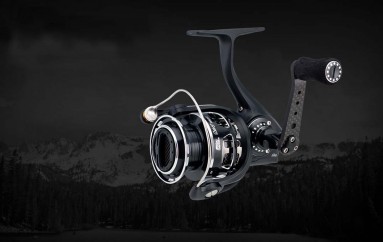
When to Use Fluoro Ice Fishing
When to use fluoro ice fishing? When finesse is a priority.
Today’s fluorocarbons handle much better in cold weather than early formulations and in situations that require the ultimate in finesse it’s the line I go to. Nearly invisible thanks to a low light reflectivity index, fluoro makes a difference in clear or heavily-pressured waters.
One great example is sight fishing trout under the black shroud of my Frabill portable, where I sit head tilted down, actually watching trout swim through turpentine-clear waters via a couple 8-inch holes. Fluoro’s near invisibility also makes it the line of choice for tight-lipped crappies and bluegills, or walleyes bellied into the bottom, during frontal systems.
Fluorocarbon also sinks, which makes it a great choice anytime you’re fishing small, light jigs. With fluoro, you can often get away without having to use split shot, an unnecessary component more anglers should jettison. The fall rate of fluoro also adds to getting your bait back down into the strike zone quicker when fish move into your vicinity. For waters where fish move in and out fast, it can make a huge difference.
And although many anglers believe fluoro has zero stretch, in actuality it does stretch, which means you can land bigger fish with a smaller diameter test when combined with a smooth-drag, high-quality spinning reel.
The past couple years I have been running 8-pound fluorocarbon on my walleye tip-ups and I’ve found my catch rate has gone up tremendously. Not only is fluoro nearly invisible, its weight helps keep minnows where you want them—near bottom. For neutral or negative walleyes, this can be key. I’ve watched high-pressure system walleyes on my Aqua-Vu that balk at chasing a shiner or fathead that swims up and away from them. The split shot act like a fulcrum keeping the minnow on a well-defined leash.
Similarly, for pike rigs I alternate between Knot2Kinky wire and 50-pound fluoro, depending on the situation.




